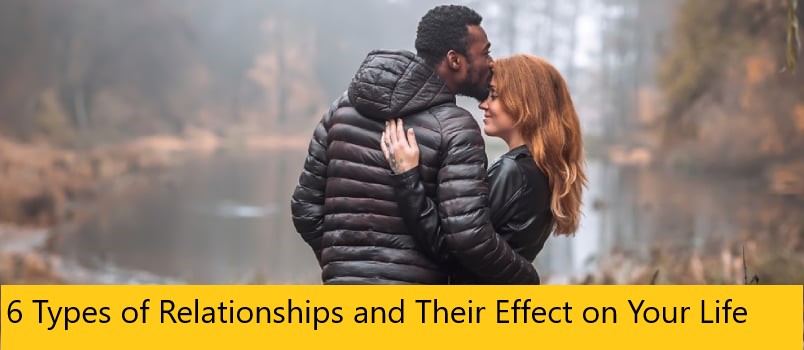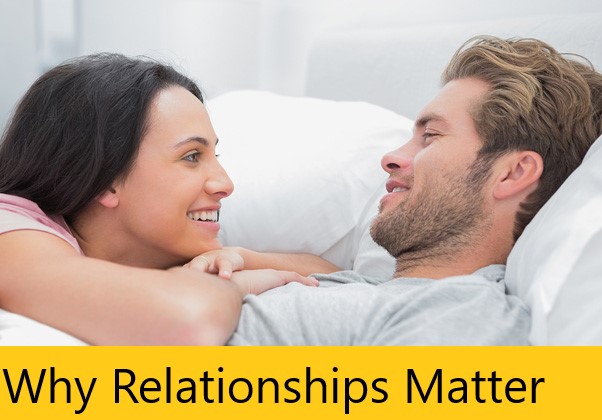Basic Types Of Romantic Relationships & How To Define Yours – People use the word “relationship” so much these days that it’s often assumed to have one universal definition. In reality, though, the word encompasses such a massive variety of kinds of human connections, both romantic and nonromantic, and it’s likely that no two people share the exact same understanding of what defines a relationship. So, here’s a cheat sheet of the basics.
What is a relationship?
A relationship is any kind of association or connection between people, whether intimate, platonic, positive, or negative. Typically when people talk about “being in a relationship,” the term is referencing a specific type of romantic relationship involving both emotional and physical intimacy, some level of ongoing commitment, and monogamy (i.e., romantic and sexual exclusivity, wherein members don’t have this type of relationship with anyone else). That said, romantic relationships can take many different forms, from marriage to casual dating to ethical nonmonogamy.
There are four basic types of relationships: family relationships, friendships, acquaintanceships, and romantic relationships. Other more nuanced types of relationships might include work relationships, teacher/student relationships, and community or group relationships. Some of these types of relationships can overlap and coincide with one another—for example, two people can be both work colleagues and close friends. There are also many variations within each category, such as codependent friendships, sexless marriages, or toxic family members.
Basic types of relationships:
- Familial relationships, aka family members or relatives
- Friendships
- Acquaintances
- Sexual relationships
- Work or professional relationships
- Teacher/student relationships
- Community or group relationships
- Place-based relationships, such as neighbors, roommates, and landlord/tenant relationships
- Enemies or rivals
- Relationship to self
Types of romantic relationships.
There are many different relationship labels people use to define their relationship to themselves and to others, but below are a few of the main basic types of romantic relationships:
Dating
Dating is the process of intentionally spending time with someone to get to know them better, have fun together, and enjoy being romantic. Dating can sometimes be about seeing if there’s potential for a more long-term relationship, or it can just be about having fun without expectations for the future, which is sometimes called casual dating.
Read More : Salvabrani.com

Not everyone agrees on what level of commitment is implied when two people say they’re “dating.” Some people only use the term when there’s already a defined, committed relationship in place, whereas others use the term to mean they’re simply exploring to see if there’s relationship potential.
Committed relationship
In the context of couples, the phrase “in a relationship” usually means being in a committed, long-term romantic relationship. A committed relationship is one where two or more people agree to continue being in a relationship for the foreseeable future. There’s an understanding that the two will continue to spend time together, work on growing their relationship with each other, and continue nurturing their connection. People in committed relationships may choose to use identifiers like boyfriend, girlfriend, or partner to signify their relationship to others.
In traditional monogamous relationships, being in a relationship also means that a couple will be romantically and sexually exclusive—that is, they won’t have any other romantic or sexual partners other than each other. In nonmonogamous relationships, exclusivity isn’t required.
Marriage is one form of committed relationship wherein a couple publicly vows to stay together and forms a legally binding union.
Casual relationship
A casual relationship is a relationship where two or more people may be dating, regularly spending time together, and engaging in romantic or sexual activities—but without any expectations for the relationship to last into the future. These types of relationships are usually more situational and short-term, and they may or may not be exclusive.
People in casual relationships usually do like each other and are attracted to each other, though there may not be an intense emotional connection or desire to deepen the connection. Whereas people in committed relationships may see each other as life partners, people in casual relationships may not be as integrated into each other’s lives. They typically won’t use terms like boyfriend, girlfriend, or partner.
Casual sex
A casual sex relationship is one where two or more people spend time together primarily to have sex with each other. They might see each other regularly for sex, or they may have sex once and never see each other again. They may like each other and enjoy each other’s company, but they’re not interested in a romantic relationship with each other. Usually, there’s no emotional connection, or the connection is distinctly platonic or friendly, as in a “friends with benefits” situation.
Situationship
A situationship is a romantic relationship that hasn’t been explicitly defined, usually by omission. The relationship may have many of the same qualities as a committed relationship, a casual relationship, or dating, but the people involved have simply not put labels on it—usually intentionally, whether that’s to avoid making things too complicated, because they’re still figuring out what they want from each other, or because they’re too afraid to bring up the “DTR talk” (aka a conversation defining the relationship).
Generally speaking, situationships usually have more emotional involvement than a friends-with-benefits scenario but not the explicit romantic feelings and commitment of a committed relationship.
While relationships without labels work great for some people, situationships can often happen because the two people aren’t on the same page about what they want or because there’s an assumption that the relationship will be short-term enough for it not to matter.



